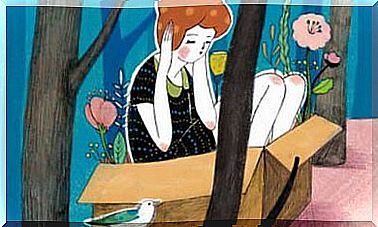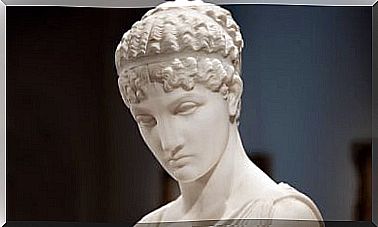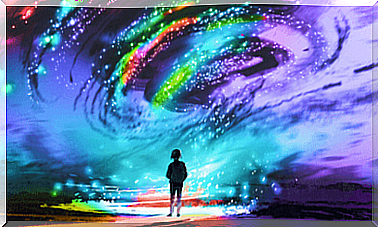Maleficent: Rewriting History

Maleficent (2014) caused a furor in movie theaters, viewers applauded the new proposal of an iconic Disney character. However, the criticism was not unanimous. They pointed to the excess of the film, the endless war scenes and the sugar overdose with which they characterized a character who, originally, had nothing good.
When updating a classic it is very difficult to hit the right note. In advance, we can anticipate that there will be people who do not like it. In addition, in the case of a character as well known as Maleficent, we can get to “destroy” the childhood of many and the image they kept of the character in their memories.
Disney, in recent years, has “put the batteries” to try to fit its classics into a more up-to-date mold, more in line with the needs and models we are looking for now. The new generations no longer belong to royalty, and they no longer need princes to save them, but rather stand (or try to) for themselves.
Disney realized that the classics, such as Snow White , Sleeping Beauty or Cinderella, still fell in love with the little ones, but this old formula no longer worked as well as before. Disney needed princesses who were strong, brave, who didn’t worry so much about finding a prince, who represented the new female icons of the 21st century. Thus, names such as Mulan (1998) and Pocahontas (1995) emerge , which we can consider pioneers of change, and Elsa ( Frozen , 2013) or Vaiana (2016), emblems of the future.
There is no princess more bland than Aurora ( Sleeping Beauty , 1959), she sleeps for most of the film, has little dialogue and falls in love without knowing the prince. Sure, we are in 1959, so it is not surprising that the only task in the lives of these princesses was to find a good husband and live happily ever after.
The Maleficent of the XXI century brings us a slightly different story; Aurora herself is the one who tells the story and says that, perhaps, it was not told quite well before. Neither the good ones are that good, nor the bad ones are totally bad; These nuances, this gray scale of evil that Maleficent presents made many not fully accept the change, as they expected to find the purest and most unjustified evil that characterized Maleficent in 1959.
The evolution of Maleficent
We are very used to Disney presenting extreme characters : some represent goodness in its purest form (reaching the extreme of naivety) and others who, on the contrary, are the personification of evil, an evil that has never been explained to us.
For many, this essence has been lost, we all love to see bad guys who do not have a reason or that our imagination is the one that plays to invent their past. However, the truth is that, in the XXI century, the demands of the public have also changed: we want to know everything, we want to know what goes through the minds of the characters and what motivates them to act in one way or another. We live in the age of information in real time, we want a reason, a cause … we want to believe in the history we are seeing.
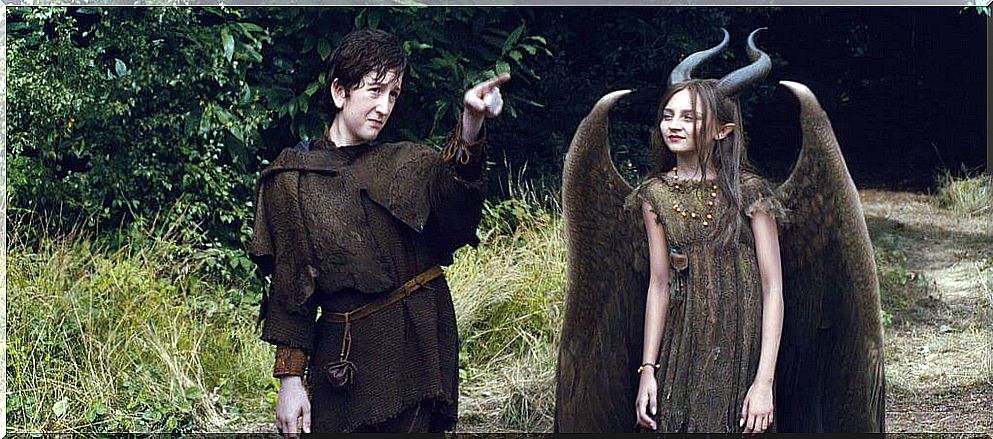
Thus, in this new version of the classic, we discover Maleficent’s past and, although her name does not accompany too much, it is not as bad as she had been portrayed. Maleficent was nothing more than an orphan fairy who lived in the wasteland, a realm where other fantastic creatures lived; on the other side was the realm of men, where greed took hold of their souls. Maleficent befriends a boy named Stefan who lives on a farm; he is also an orphan and the two will start a friendship.
Stefan continues to visit Maleficent and, when they turn 16, he kisses her (supposedly a symbol of his true love). However, Stefan is ambitious and aspires to become king despite his humble origins; This ambition will make her stay away from Maleficent and, finally, betray her by ripping off her wings. The king will name him successor and Stefan finally achieves his long-awaited goal; and Maleficent takes refuge in her hatred and her thirst for revenge, becoming the villain we met in Sleeping Beauty .
Tying up loose ends
The film Maleficent is responsible for “fixing” and filling in the gaps that were left loose in the past. Maleficent is now not a character we hate, but rather we understand and strive to understand why she acted this way.
It is true that the idea of revenge and hatred are still closely linked to the character, but, when he meets little Aurora, he will end up becoming fond of her and will try to make up for his mistake. In addition to the evolution of Maleficent, we witness some changes that explain gaps in the first version:
- The fairies : it is true that they were the characters that fell in love with the public in Sleeping Beauty , but, in Maleficent , we see that they are much clumsier than we expected and, with difficulty, they can take care of a baby. Something that has bothered and liked in equal parts.
- Aurora : she is still innocent, but she is much more adventurous than the previous version. See Maleficent as her fairy godmother and her role will be instrumental in the protagonist’s redemption. Likewise, the love story with the prince will no longer be relevant in the plot.
- The Raven : has always been an important character for Maleficent in both versions. But in this one, we discover that, having been stripped of her wings, she needs someone to watch from the air. The choice of the raven is not accidental, as they are animals that are associated with great intelligence. Maleficent transforms him into a human to give him orders and a strong understanding will emerge between them. The raven, Diaval, will turn into a kind of Maleficent conscience.

A kiss of true love
Maleficent does not believe in love, Stefan betrayed her at the age of 16; therefore, he will punish his daughter with the same sentence. Stefan himself knows that true love does not exist, because he has never professed it, he only knows greed. Maleficent was carried away by the hatred and resentment she held for Stefan, but upon meeting Aurora, she sees that she is not guilty of her father’s actions, that she does not deserve that punishment and, although she tries to revoke the spell, she does not He succeeds and the only solution is for him to receive a loving kiss.
Skepticism about Maleficent’s love will make her believe her salvation impossible, but Diaval and the fairies believe that Prince Philip’s kiss will wake her up. However, Philip, although he is attracted to Aurora, is still not in love, he hardly knows her and his kiss fails to wake her up ; and it is that love is something much more complex than what Disney taught us in his classics.
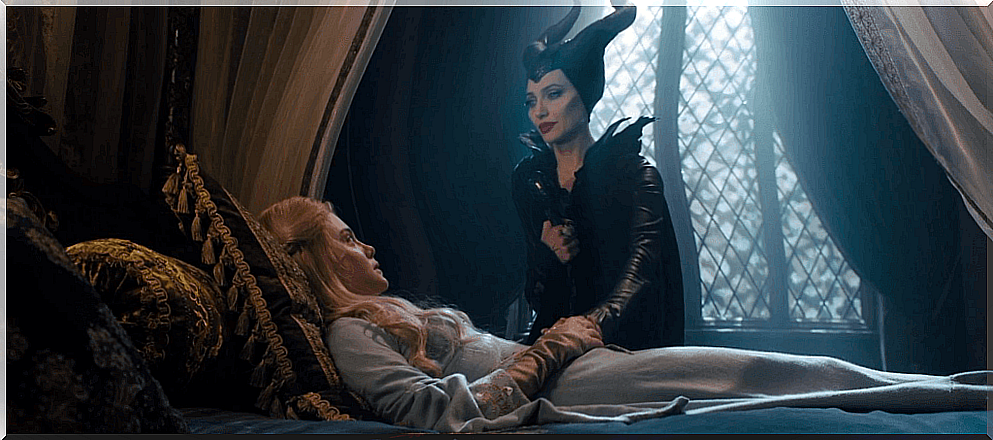
Thus, a maleficent regretful and hurt by what she has done gives her a kiss, a totally maternal kiss, but of true love without any doubt, causing Aurora to wake up from her death dream. Breaking, thus, the cliché of all Disney classics.
Annoy or reinvent a classic, that depends on opinion. What is clear is that, with these new versions, we are getting closer to less tragic, less vulnerable stereotypes.
They reflect an idea that materializes every second in the world: neither badness nor goodness are born out of nowhere and they are not usually extreme. In this sense, we all have a series of nuances within us, we can all trigger hatred and love in certain situations. And, finally, women do not need princes to rescue them, love is built little by little and, for it to be solid, it takes more than the simple initial attraction.
